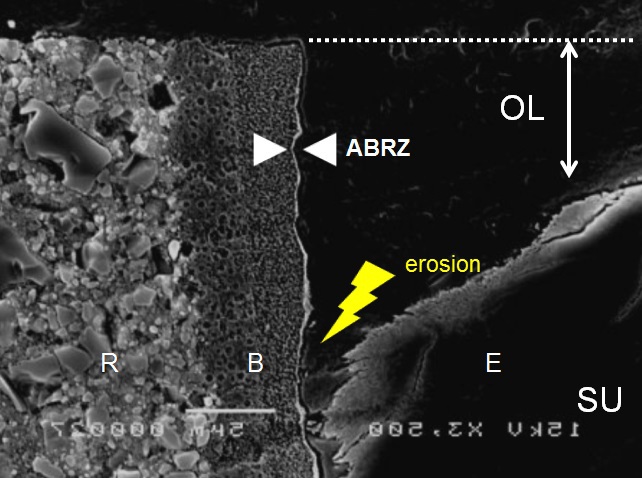IADR Abstract Archives
Morphological and mechanical evaluation of enamel-adhesive interface of self-etch systems
Objectives: This study aimed to compare the morphology and mechanical properties of adhesive-enamel interface among 3 adhesives, and examine the necessity of selective enamel etching for a universal bonding system.
Methods: Three adhesive systems were used in 4 groups; Clearfil SE Bond (SE group: Kuraray Noritake Dental), Optibond XTR (OB group: Kerr), Scotchbond Universal (3M ESPE) with and without enamel etching using K-etchant Gel (Kuraray Noritake Dental) for 10 seconds (SU and PA groups, respectively). After the bonding was applied on ground buccal enamel surfaces of human sound premolars in each group, a flowable composite (Majesty LV: Kuraray Noritake Dental) was placed. For observation of acid-base resistant zone (ABRZ), the bonded interface was exposed to demineralising solution (pH 4.5) for 4.5 h, followed by 5% NaOCl with ultrasonication for 30 min. After argon-ion etching, the interfacial ultrastructure was observed using scanning electron microscope. Other specimens were processed for nanoindentation hardness test (ENT-1100a, Elionix). Indentations were performed at 1-µm pitch from bonding interface down to 12 µm.
Results: ABRZ formation was confirmed beneath the hybrid layer in all adhesives. Funnel-shaped erosion beneath the interface was present in SU group only, where nearly 5 µm of enamel was dissolved. The nanoindentation hardness always showed a gradient increase gradually from the adhesive interface towards enamel, reaching sound value at approximately 5 µm-depth. There was no difference in hardness trend between SU and SE.
Conclusions: ABRZ was confirmed in all groups. However, enamel beneath the bonding interface was found to be more susceptible to acid-dissolution in SU group, while the trend of hardness was similar to SE. The quality of adhesion and interaction at interface is the key in adhesion to enamel substance. In the case of the single-step universal bonding system, enamel etching should be recommended to improve the interfacial quality.
Methods: Three adhesive systems were used in 4 groups; Clearfil SE Bond (SE group: Kuraray Noritake Dental), Optibond XTR (OB group: Kerr), Scotchbond Universal (3M ESPE) with and without enamel etching using K-etchant Gel (Kuraray Noritake Dental) for 10 seconds (SU and PA groups, respectively). After the bonding was applied on ground buccal enamel surfaces of human sound premolars in each group, a flowable composite (Majesty LV: Kuraray Noritake Dental) was placed. For observation of acid-base resistant zone (ABRZ), the bonded interface was exposed to demineralising solution (pH 4.5) for 4.5 h, followed by 5% NaOCl with ultrasonication for 30 min. After argon-ion etching, the interfacial ultrastructure was observed using scanning electron microscope. Other specimens were processed for nanoindentation hardness test (ENT-1100a, Elionix). Indentations were performed at 1-µm pitch from bonding interface down to 12 µm.
Results: ABRZ formation was confirmed beneath the hybrid layer in all adhesives. Funnel-shaped erosion beneath the interface was present in SU group only, where nearly 5 µm of enamel was dissolved. The nanoindentation hardness always showed a gradient increase gradually from the adhesive interface towards enamel, reaching sound value at approximately 5 µm-depth. There was no difference in hardness trend between SU and SE.
Conclusions: ABRZ was confirmed in all groups. However, enamel beneath the bonding interface was found to be more susceptible to acid-dissolution in SU group, while the trend of hardness was similar to SE. The quality of adhesion and interaction at interface is the key in adhesion to enamel substance. In the case of the single-step universal bonding system, enamel etching should be recommended to improve the interfacial quality.

